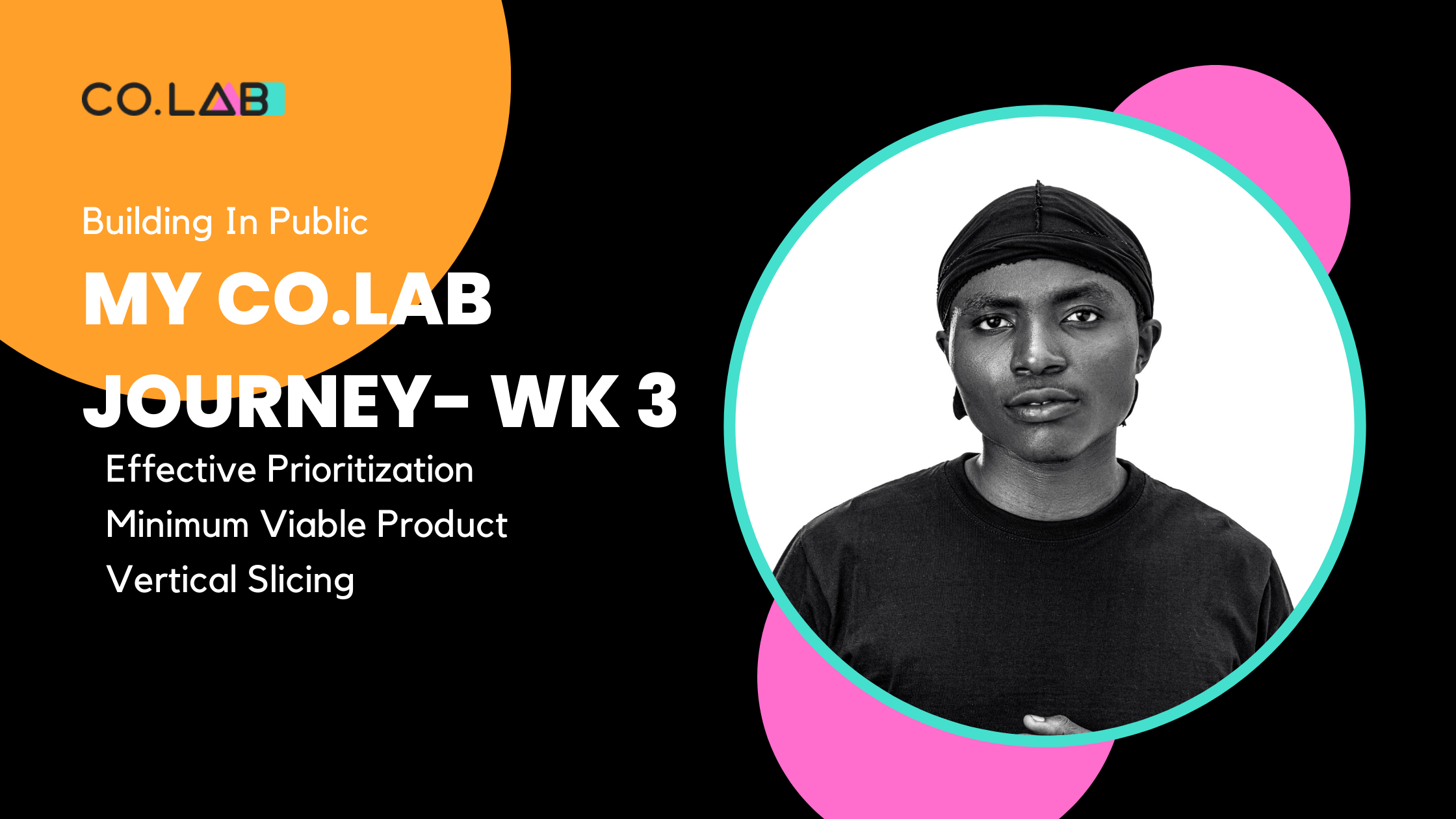My Co.lab Journey—WEEK 3
 Onyedikachi Eni
Onyedikachi Eni
WHAT DID YOU LEARN
I learned the following this week:
- Effective Prioritization: Practical tips to help determine your product MVP.
- Minimum viable product(MVP): Creating a small viable solution that brings value to users.
- Vertical Slicing
EFFECTIVE PRIORITIZATION
With how easy and cheap software(not good software of course) is able to make these days most fail in market. How do we ensure our software don't fail? This where the MVP(minimum viable product) comes in.
MVP
The MVP is the first working version of your product, with just enough features to satisfy a given set customers.
WHY DO WE USE MVPS
Since the amount of waste(products that fail) is considerable. The MVP serves as a process or mechanism we use to avoid waste. The MVP enables us to avoid waste, by gaining insight about the market and customers first before building. We can then build the solution(or what we think is the solution) to solve the identified customer problems from our insights. We can then measure the effectiveness of the solution by putting it in front of our customers and get feedback.
CODE --> MEASURE --> LEARN
XTERISTICS OF A MVP
- Serves a particular audience or customer segment
- Deals with one key issue
- Gives a better understanding of what to build so you don't waste resources
- Can be built quickly
WHO BUILDS AN MVP
The MVP is collective effort of 3 disciplines, product, design and engineering. The involvement of this discipline ensures the MVP is valuable to the target audience, usable by customers and feasible to be built given the constraints of time and tech resources available.
PRIORITIZATION RULES TO HELP DEFINE AND MVP
- Remember It's still a product! You have to ensure the MVP is still a product, one that is valuable to your customers, usable by them and feasible by your cross-functional team to build, test and launch.
- Do One thing well Select one job-to-be-done, one customer pain point and solve it well.
- Remember your product posture In product design, we identify a product's posture which defines the context of the user interaction with the product.
The 3 types of product postures
- Sovereign: These are products that mononpolize a user's attention for a long period of time E.g Word, Google sheets, Email.
- Transient: These are apps that "come and go" pressenting one function with a limited set of controls. Once the user accomplishes their goal the exit. E.g Weather, calculators, Ride sharing. Here you take advantage of the users attention for a short period of time by which a user achieves a certain goal or outcome.
- Daemonic: These are the apps that run in the background and only appear when there is a problem or need to alert the user. E.g printer status, network connections.
VERTICAL SLICING
Software is built in layers. You have a database that store information information about your users. Middle layer that moves data from backend to the UI, and finally, the frontend where the user interacts with the application.

Nugget: Think about implementation in vertical slices, implement a feature at a time—Create the database and UI for the feature(front/backend)
Subscribe to my newsletter
Read articles from Onyedikachi Eni directly inside your inbox. Subscribe to the newsletter, and don't miss out.
Written by

Onyedikachi Eni
Onyedikachi Eni
Dev. | Creator. | Writer.